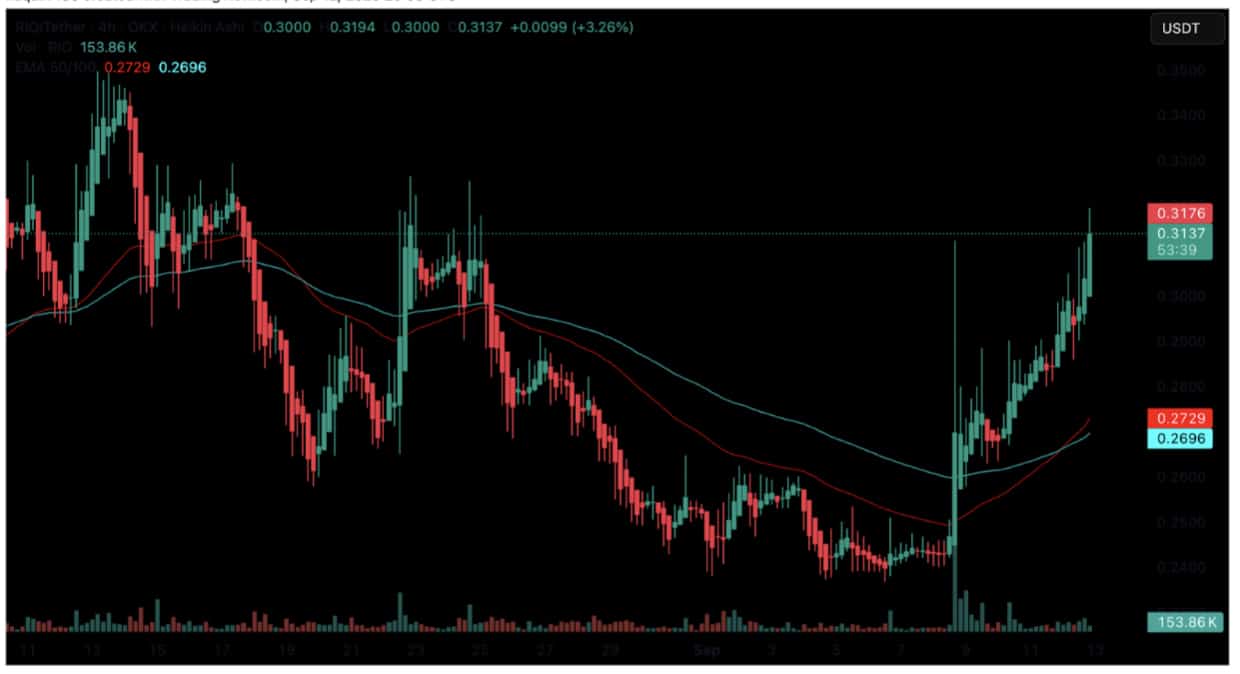🚀 RIO Upgrade Ignites on Polygon Testnet: POL Price Forecast for September 2025 Revealed
Polygon's ecosystem just got a major power-up—the RIO upgrade hits testnet, sparking fresh speculation about POL's trajectory.
Testnet Triumph
Developers are putting the upgrade through its paces, stress-testing scalability enhancements and fresh tokenomics. Early signals suggest smoother transactions and reduced gas fees—exactly what the chain needed to compete.
POL Price Pulse
Traders are already positioning, betting that a successful mainnet rollout could send POL toward new highs. Past upgrades have historically triggered rallies—this one’s no exception. Market sentiment? Cautiously optimistic.
Broader Implications
Beyond price, RIO could cement Polygon’s place as a Layer-2 leader. Faster finality, stronger security—it’s all part of the plan to lure more devs and projects onboard. The goal? Make Ethereum jealous.
Of course, in crypto, even the slickest upgrade can’t outrun a bear market or regulatory surprise—because nothing says 'financial innovation' like watching your portfolio swing 30% on a tweet.
RIO Price Prediction: Can RIO Sustain Its Rally Toward the $0.34-$0.35 Resistance Zone?
Following several weeks of pressure, RIO has made a sudden recovery, turning around an August decline between $0.34 and $0.23. The turning point came on September 9 when the trading volume increased sharply, and buyers took control and lifted the token further.
RIO was driven up to above the 50-day EMA at $0.2729 and the 100-day EMA at $0.2696, with the latest close at $0.3137, which was +3.26% higher than its previous close.

(Source – RIO USDT. TradingView)
This reversal indicates a bullish realignment, which is usually followed by more powerful rallies.
Momentum is evident in the chart. Increasing lows and high green candles are indicative of confidence building, and the decisive move above the $0.30 area has changed the mood.
The next key test lies at $0.3176. A clean break into that level might open the road to $0.34, the last seen in mid-August.
The support is at the current level of $0.28, and further protection is at the EMA cluster of $0.27.
The structure resembles a classic reversal: a long downtrend, followed by accumulation, then a breakout backed by rising volume. That volume profile suggests both retail and institutional money are involved.
Analysts say the near-term focus is on the $0.3176-$0.32 range. A sustained push higher could stretch gains toward $0.34-$0.35, a psychological barrier. But if the token fails to defend $0.30, profit-taking may pull it back to $0.28.
Overall, the outlook has tilted bullish, though volatility is likely as RIO works through these resistance levels.
How Will The Rio Upgrade Make Transactions Faster and Cheaper?
The Rio Upgrade of Polygon is yet another move towards scaling and remaining competitive by the network.
The update is aimed at increasing throughput and reducing transaction finality times, and thus making transactions faster and less expensive to users and developers.
Another of the largest changes is the increased role of validators. By assigning them a higher responsibility, Polygon wants to enhance the decentralization of the system and maintain a low-cost system.
The changes are helping in its overall objective of establishing the platform that will help it manage global payments and tokenization of real-world assets.
The Rio Upgrade is an improvement on a series of significant upgrades in the previous year. In September 2024, Polygon changed the name of its native token to POL, which is used throughout the ecosystem.
Next, in June 2025, the Bhilai hard fork released the first step of the GigaGas roadmap, increasing throughput to 1,000 transactions per second and enhancing the stability of gas fees.
A month later, Heimdall v2 reduced transaction finality to about five seconds and cleared outdated code. Taken together, these updates show a steady push to reinforce Polygon’s technical foundations.
With Rio now live, the network continues to build toward higher efficiency, stability, and decentralization, aiming to keep pace with the demands of an evolving blockchain market.

